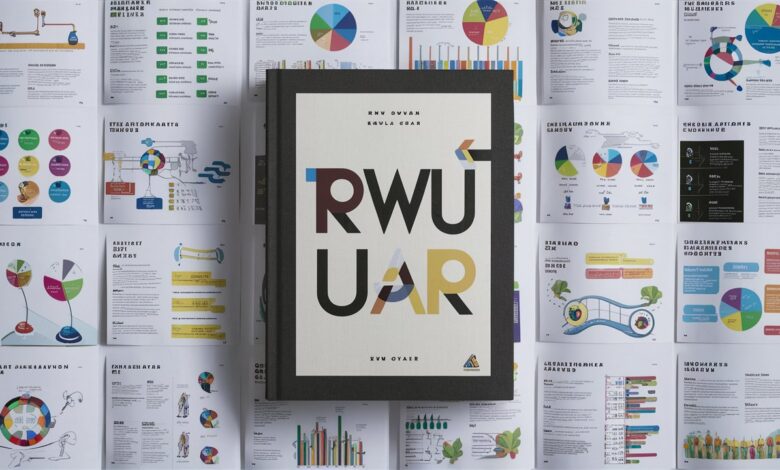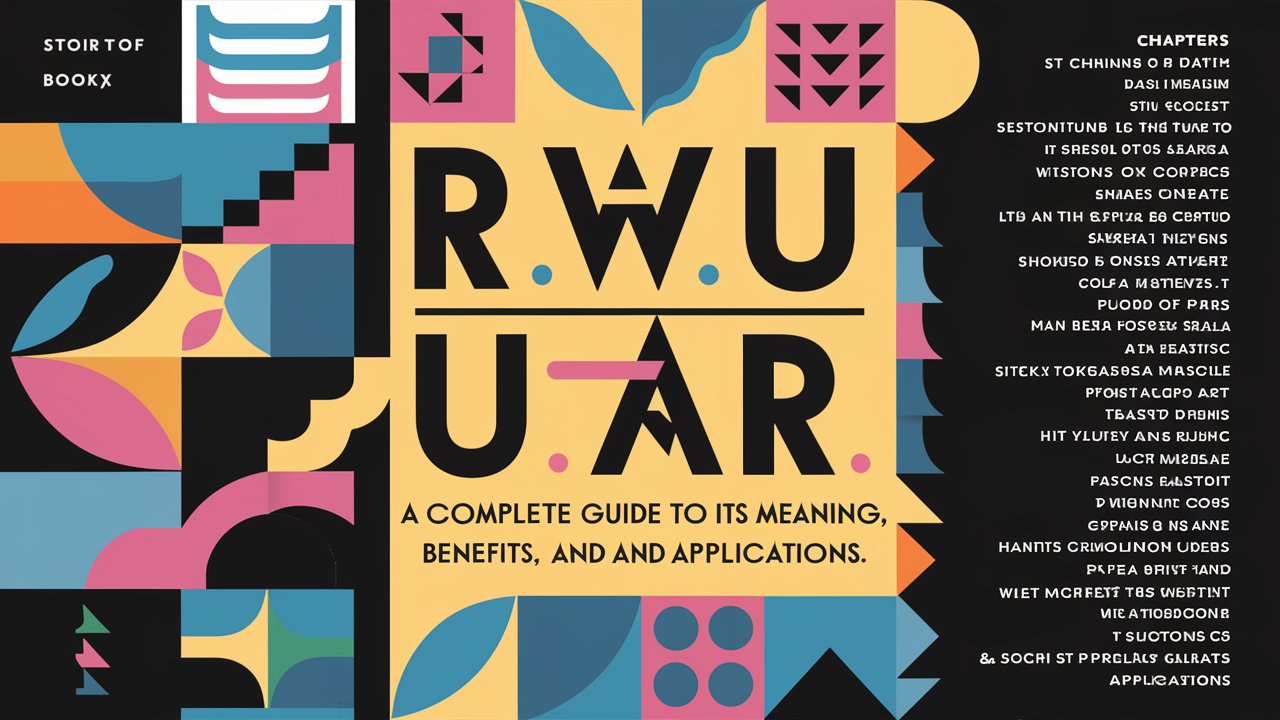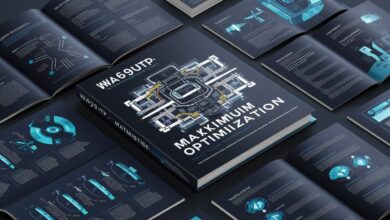RWU UAR – A Complete Guide to Its Meaning, Benefits, and Applications

In the digital age, acronyms like RWU UAR often appear across industries — from technology and business to academic and operational systems. Understanding what RWU UAR stands for, how it functions, and its importance in today’s rapidly evolving landscape is essential for professionals seeking innovation, efficiency, and success. In this comprehensive guide, we explore the meaning, structure, and real-world applications of RWU UAR, while highlighting how it shapes the modern ecosystem of data, automation, and resource utilization.
What is RWU UAR?
The term RWU UAR combines two essential operational components — RWU (Resource Work Unit) and UAR (Unified Access Resource). Together, these terms form a framework that emphasizes optimized access, resource allocation, and operational efficiency within a digital or physical system.
In simpler terms, RWU UAR refers to a centralized mechanism for managing work units and resources under a unified access structure. It allows organizations to streamline workflow, enhance data management, and ensure consistent access control across networks or teams. This hybrid model promotes efficiency, transparency, and accountability.
Understanding the Core Components of RWU UAR
To fully comprehend the significance of RWU UAR, it’s crucial to break down its two primary components:
1. RWU – Resource Work Unit
RWU focuses on task segmentation, workload distribution, and performance tracking. Every activity or process is broken down into measurable work units, enabling precise monitoring of productivity and resource allocation. This concept is widely used in project management, data analytics, and workflow optimization.
Key aspects of RWU include:
-
Task Management: Breaking down large operations into smaller, measurable tasks.
-
Resource Utilization: Ensuring each unit of resource (time, manpower, technology) is used effectively.
-
Performance Evaluation: Tracking efficiency through key performance indicators (KPIs).
-
Scalability: Allowing organizations to expand or reduce workloads dynamically.
2. UAR – Unified Access Resource
UAR provides a centralized access layer that connects users, systems, and data resources in one cohesive framework. It ensures that every resource within a network can be accessed securely and consistently based on permissions and role-based protocols.
Key features of UAR include:
-
Centralized Access Management
-
Role-Based Control Systems
-
Data Security and Encryption
-
Seamless Integration Between Platforms
Together, RWU and UAR establish a robust foundation for data governance, system automation, and operational control.
The Importance of RWU UAR in Modern Business Systems
In today’s data-driven world, RWU UAR plays a transformative role across multiple industries. Whether in IT infrastructure, corporate management, or academic research, it ensures structured access to resources, reducing redundancy and improving performance.
Here’s why RWU UAR is critical:
-
Enhances Operational Efficiency: By breaking down and tracking work units effectively.
-
Improves Resource Allocation: Ensures that resources are directed where they’re most needed.
-
Boosts Security and Compliance: Through unified access and identity management.
-
Enables Real-Time Decision Making: With transparent access to data and analytics.
-
Supports Scalability: Adapts easily to the growth of digital infrastructure.
Applications of RWU UAR Across Industries
1. Information Technology (IT)
In IT environments, RWU UAR is implemented for system automation, access management, and workload balancing. By using unified access controls, businesses can streamline data flow between servers, reduce unauthorized access, and maintain system integrity.
2. Project Management
RWU UAR simplifies task allocation and progress tracking by dividing projects into measurable work units. Managers can easily monitor individual contributions, assign resources, and generate performance reports.

3. Education and Research
In academic institutions, RWU UAR frameworks support data sharing, research collaboration, and secure information access. Unified access ensures that students and faculty can retrieve digital resources seamlessly.
4. Finance and Banking
Financial systems use RWU UAR models for secure transaction management and access control. Each transaction or operation is treated as a work unit with clearly defined roles and authentication levels.
5. Healthcare and Data Science
In healthcare, RWU UAR enables safe access to medical data while maintaining privacy. Doctors, administrators, and researchers can collaborate efficiently under a unified system that respects confidentiality.
Benefits of Implementing RWU UAR
Organizations that adopt RWU UAR report measurable improvements across several key performance areas:
-
Enhanced Efficiency – Streamlined access and resource distribution reduce time wastage and bottlenecks.
-
Cost Optimization – Efficient resource utilization leads to significant savings in operations.
-
Data Security – Centralized access control prevents data leaks and unauthorized intrusions.
-
Transparency and Accountability – Every task and resource is traceable through the system.
-
Improved Collaboration – Unified access promotes interdepartmental synergy.
-
Compliance Management – Ensures adherence to data privacy laws and operational regulations.
Challenges in Adopting RWU UAR
While the benefits are substantial, RWU UAR implementation may face hurdles if not managed strategically:
-
Integration Complexity: Combining legacy systems with new unified access models can be challenging.
-
Training Requirements: Employees may require orientation for smooth adaptation.
-
Data Migration Risks: Transferring large-scale data to a centralized platform must be carefully executed.
-
Security Maintenance: As access becomes centralized, the need for constant security audits increases.
However, with the right strategy, tools, and governance, these challenges can be effectively mitigated.
Best Practices for RWU UAR Deployment
To ensure success, organizations should adopt the following best practices:
-
Conduct a System Audit – Assess existing workflows and access structures.
-
Establish Role-Based Permissions – Define access levels for each user group.
-
Implement Strong Encryption Protocols – Protect data during transit and storage.
-
Regular Monitoring and Reporting – Keep performance and security metrics updated.
-
Invest in Training – Empower staff to use the RWU UAR framework effectively.
-
Adopt Scalable Solutions – Ensure the system evolves with organizational growth.
Future of RWU UAR
As organizations continue to digitize, RWU UAR will become an even more critical element of infrastructure. With the rise of AI, IoT, and cloud computing, unified access and resource management systems will evolve to be more intelligent, adaptive, and autonomous. We can expect AI-driven RWU UAR frameworks capable of predictive analytics, automated access control, and real-time optimization, marking a new era of operational intelligence.
Conclusion
In an era where data, security, and efficiency determine organizational success, adopting a RWU UAR system represents a strategic advantage. By combining resource work units with unified access frameworks, businesses can achieve unprecedented levels of productivity, transparency, and control. Whether in IT, education, healthcare, or finance, RWU UAR stands as a cornerstone of modern efficiency and digital governance.
Frequently Asked Questions (FAQ)
1. What does RWU UAR stand for?
RWU UAR stands for Resource Work Unit Unified Access Resource, a framework combining workload management and centralized access systems.
2. How does RWU UAR improve security?
It implements centralized, role-based access and encryption protocols that prevent unauthorized data breaches.
3. Is RWU UAR suitable for small businesses?
Yes. Even small enterprises can benefit from streamlined operations and simplified data management using scalable RWU UAR models.
4. What are the main challenges in RWU UAR implementation?
Integration with legacy systems, data migration risks, and training requirements are the primary challenges.
5. How can companies get started with RWU UAR?
Begin by conducting a system audit, defining user roles, and implementing secure, scalable access protocols.



